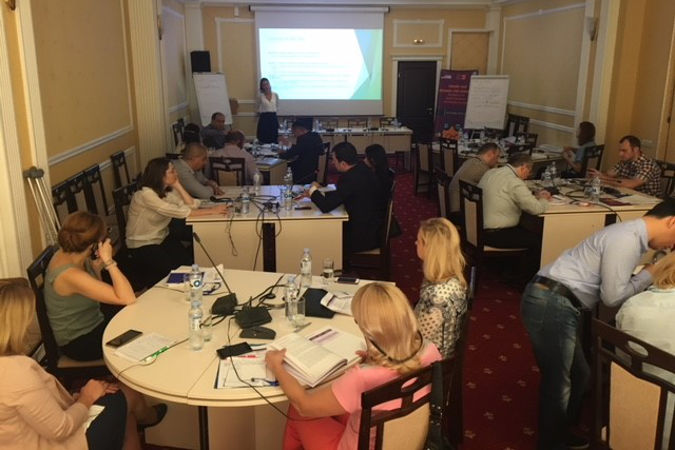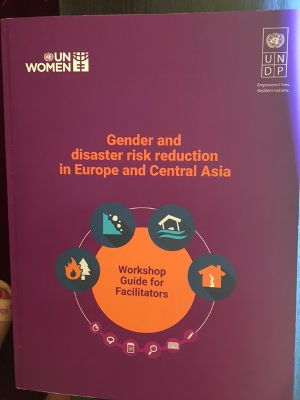New guide by the UN in Europe and Central Asia spotlights gender dimensions of disasters
UN Women Europe and Central Asia Regional Office and UNDP Istanbul Regional Hub for Europe and the CIS launch new training guide on how gender can be incorporated in disaster risk reduction in Europe and Central Asia. The training was developed to ensure that the disaster risk response in the region integrates women’s participation and needs.Date:

The Gender in Disaster Risk Reduction in Europe and Central Asia workshop guide is launched this week on the websites of UN Women Europe and Central Asia Regional Office and UNDP Istanbul Regional Hub for Europe and the CIS.
The guide was developed for practitioners and officials from the United Nations, national governments, civil society organizations, and other institutions to help them strengthen their understanding of the gendered impact of disasters. It also helps them to plan, implement, monitor and evaluate gender-responsive disaster risk reduction (DRR) programmes and initiatives.
A formal launch event was organized at the end of May in Chisinau, Moldova, where close to 40 government and civil society representatives came together to understand how gender can be incorporated in disaster risk reduction at a workshop. At the two-day event on 24-25 May, co-organized by UN Women Europe and Central Asia Regional Office, UNDP Istanbul Regional Hub for Europe and the CIS and UNFPA, participants were provided clear arguments for why gender-responsive DRR can increase DRR efficiency and effectiveness and help ensure that women participate on an equal basis with men in disaster preparedness, response and longer-term recovery.

For many of the participants, who primarily work in national emergency response institutions, it was the first time that they considered how to include gender issues in their preparedness and response.
“I will take back what I learned here and incorporate it in my curriculum,” said David Tadevosyan, director of the Crisis Management State Academy of the Ministry of Emergency Situations of Armenia. Even though his academy provides training to some 1800 men and women yearly, until now gender was not part of the course on disaster preparedness and response.
The discussion on gender analysis and monitoring in DRR was especially relevant for participants. As one pointed out, as the second day of training started, “gender equality seems like a simple issue, but, it requires the collection of a large amount of data and analysis.”
Reporting on gender and DRR has now become mandatory for states. The Sendai Framework for Disaster Risk Reduction (2015-2030) emphasized the importance of engaging women in disaster and climate risk reduction programmes. In February 2018, the Committee on the Elimination of All Forms of Discrimination against Women (CEDAW) passed a new recommendation on the gender-related dimension of DRR in the context of climate change, which calls on all states to ensure that all policies, plans, programs, budgets and activities related to DRR and climate change are gender-responsive and grounded in human rights principles.
Currently available in English and Russian, the guide is composed of four training modules on gender equality in disaster risk reduction, disaster preparedness, disaster response and recovery and in monitoring of DRR programs. It includes presentations, practical exercises and recommended readings. In addition to the UN Women – UNDP core research and writing team, a peer review group composed of 10 UN Women, UNDP and UNFPA experts provided insights and oversight during the drafting phase.